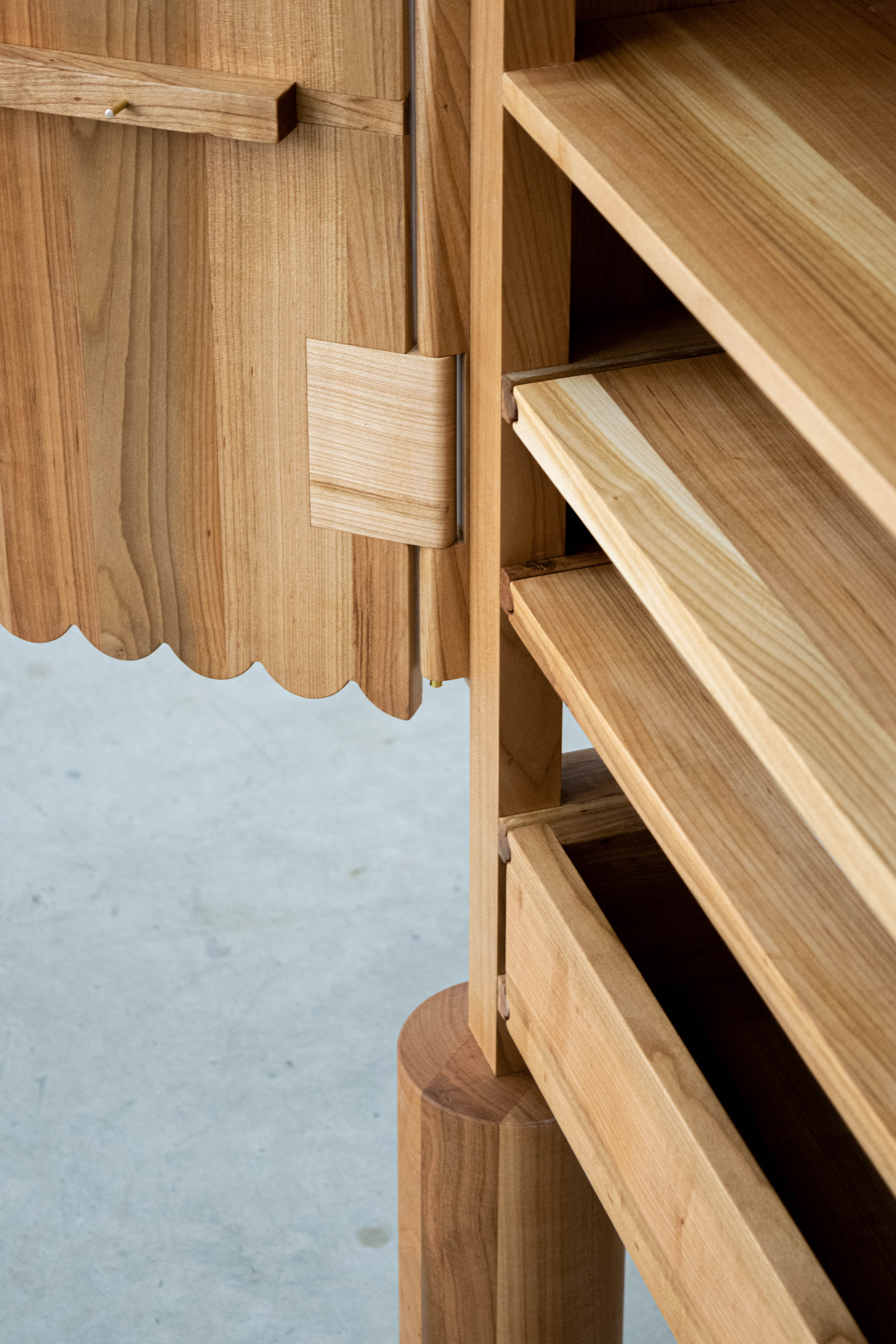The winged cabinet
designed for the exhibition The glass workshop in Transylvania and Ștefan Câlția - the recovery of a lost craft by Ștefan Câlția Foundation
2022
Bucharest
status: built
concept design: Anca Cioarec, Brîndușa Tudor
co-design and production: Alexandru Voicilă, Ștefan Nechita (Atelier Vast)
photography: Ștefan Mirică (1-13), Alexandra Foyo (15), Văleanu Eduard Andrei (16-19)
The winged cabinet is a small nomadic exhibition space for the glass vases, their production process and the research of the project The glass workshop in Transylvania and Ștefan Câlția - the recovery of a lost craft.
The cabinet responds to specific needs of the act of displaying:
It primarily proposed a domestic scale, not foreign to a room of an old house in the Transylvanian villages, where the vases were produced in the local glass workshops (from the 17th century until the beginning of the 20th century).
It was also important to offer multiple opening sequences depending on where it is placed: a simple, one-way opening when it sits close to the wall, or a double opening when it’s placed in the center of a room. In both situations, openness pursued a relationship with light.
In the first case, where the wings of the cabinet are closed on one of the faces, a small circular hole will allow the passage of a ray of light that will cross one of the vases, having a light source near the wall. And in the second one, the wide open wings will allow the light to pass through all the glass objects on the shelves. The sides of the cabinet with wide open wings will also become an exhibition space, a double-sided triptych that can reveal to the outside illustrations or two-dimensional materials or can itself become a painted support. Towards the inside, the triptych will provide space for different elements from the universe of the glassware: tools that talk about the production process or bunches of flowers that talk about utility.
Last but not least, due to considerations related to the dimensions of the means of transport in which the cabinet will move from one place to another, four removable legs were needed, a kind of oversized plinths for placing the nomadic, winged object in different spaces of exposure.
The material used to build the wardrobe was cherry wood, a local species of medium density which satisfies the need for a low overall weight of the piece. The construction system involves using wood on wood joinery. The wings of the wardrobe received custom wooden hinges with brass details. In order to maintain as much as possible the natural aspect of the wood, the entire piece was finished with natural oil.
So far, the object has been exhibited in three rural micro-exhibitions in Cârțișoara, Avrig and Arpașu de Sus, some of the places where there were glass workshops, the exhibitions bringing to the attention of the community this craft that disappeared almost a century ago.



















